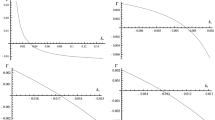Abstract
It is becoming increasingly clear that electron thermal effects have to be taken into account when dealing with the theory of ionospheric instabilities in the high-latitude ionosphere. Unfortunately, the mathematical complexity often hides the physical processes at work. We follow the limiting cases of a complex but systematic generalized fluid approach to get to the heart of the thermal processes that affect the stability of E region waves during electron heating events. We try to show as simply as possible under what conditions thermal effects contribute to the destabilization of strongly field-aligned (zero aspect angle) Farley-Buneman modes. We show that destabilization can arise from a combination of (1) a reduction in pressure gradients associated with temperature fluctuations that are out of phase with density fluctuations, and (2) thermal diffusion, which takes the electrons from regions of enhanced temperatures to regions of negative temperature fluctuations, and therefore enhanced densities. However, we also show that, contrary to what has been suggested in the past, for modes excited along the E 0 × B direction thermal feedback decreases the growth rate and raises the threshold speed of the Farley-Buneman instability. The increase in threshold speed appears to be important enough to explain the generation of ‘Type IV’ waves in the high-latitude ionosphere.
Similar content being viewed by others
Author information
Authors and Affiliations
About this article
Cite this article
St.-Maurice, JP., Kissack, R.S. The role played by thermal feedback in heated Farley-Buneman waves at high latitudes. Annales Geophysicae 18, 532–546 (2000). https://doi.org/10.1007/s00585-000-0532-x
Received:
Revised:
Accepted:
Issue Date:
DOI: https://doi.org/10.1007/s00585-000-0532-x




